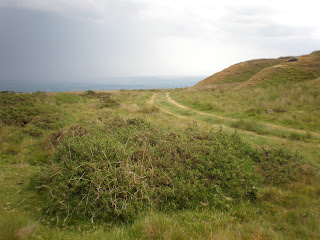Occasionally interesting projects do get shown on the BATC QO100 net which runs on Thursday evenings!
One such occasion in November 2024 was when GI4DOH mentioned and showed that he was using a cheap A to D board in front of a commercial FPGA board to do cw skimming and rtty skimming instead of the expensive Red Pittaya board.
I had been using my ANAN 10 to do my skimming which is overkill . It is limited to 4 receivers. His system could do 16 so time to Investigate!
Full information was available at https://pavel-demin.github.io/qmtech-xc7z020-notes/ who was the designer of the A to D board. All the necessary files were available to get the boards assembled in China. Luckily I found someone who was getting a batch made so I ordered one from him. The cost (shipped) was £58
The FPGA board QMTECH ZYNQ7000 XC7Z020 Development Board was available from Aliexpress for around £80. It came with a 5 Volt Power supply
The only other items needed were a 2x25 pin header and socket to mate the boards, a Heatsink to keep the FPGA from overheating and an edge mount SMA socket. I found the 2x25 pin connectors recomended in the links to be too tight a fit, needing a screwdriver to seperate them (risking damaging the board) so I ended up using some single row headers and sockets, cut to length and superglued together
The A/D PCB has a reminder to remove R14 and R15 on the FPGA board before mating the two boards and to connect 3.3V wires between the 2 boards (the positive lead on the RX board goes furthest away from the edge of the board), It didnt take long to assemble.
Software was easy. Format an SDHC card then copy the contents of qmtech-adc-20240614.zip to it. I also copy the start.sh from sdr_receiver_hpsdr_77_76 directory to the root directory so that on power up the receiver can be accessed by HPSDR
After power up I found the IP address assigned by the router and pointed PowerSDR running on my PC to it. It connected and I could see signals:-
Overnight I compared the 600m WSPR decodes on the new receiver with the 600m WSPR decodes on the ANAN-10. They were within 1dB of each other, the new receiver has good sensitivity!
Now to make the receiver protected from accidents from falling items!































